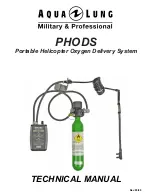
4
TG_TF-BA-e-2020
3.
Technical data
TE 1250-0.1F
TE 1250-0.1FN TE 1250-0.1N
Display
4 digits, 10mm LCD display with backlight
Measuring range
0 to 1250
μm / 0 to 50 mil (standard)
Resolution
0,1 µm (0 to 99,9 µm), 1 µm (over 100)
Measurement
uncertainty
3 % of the measured value or Min ± 2,5 µm.
Applies within the tolerance band of ± 100 µm
around the typical measuring range if a two-point
calibration was also performed within this
tolerance band
off-set accuracy
1 % of the measured value or min. 1,0
μm
Applies within ± 50
μm around the
offset Accur
Point
PC connection
RS-232 interface
Power supply
2x1.5 AAA batteries
Ambient
temperature
0°C to 50°C
Air humidity
≤
80%
Dimensions
126 x 65 x 35mm
Weight
Ca 81g (without batteries)
Scope of delivery
- Carrying case
- Operating instructions
- TF 1250-0.1FN: Built-in measuring probe F and
built-in measuring probe N (carrier material is
automatically detected)
- TG 1250-0.1FN: Measuring probe FN external
(carrier material is automatically detected)
- 1 set of adjustment foils, available for each
model
- Zero plate (aluminium)
- Zero plate (iron)
Optional accessories:
- Software and cable RS-232C: ATC-01
- RS 232 to USB Adapter: AFH 12
- Calibration foils (replacement order): ATB-US07
- External measuring probe FN (For TG 1250-
0.1FN): ATG 01
Attention: All accuracy specifications apply after adjustment!




























